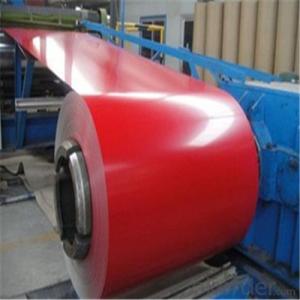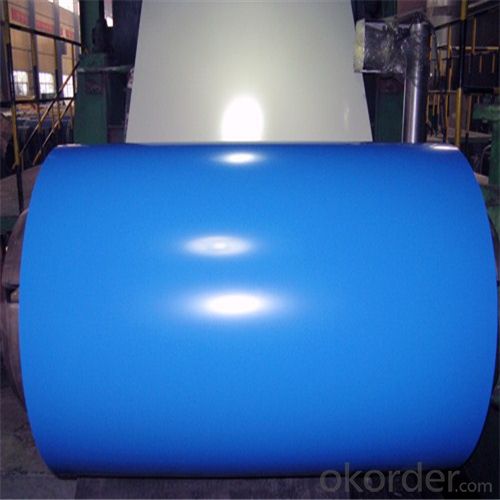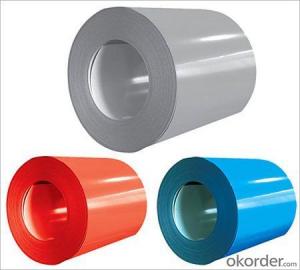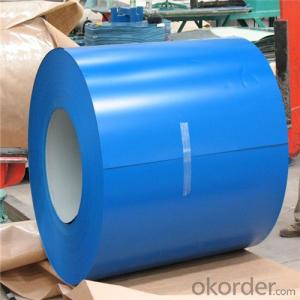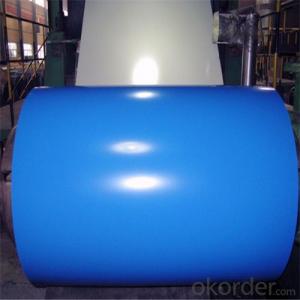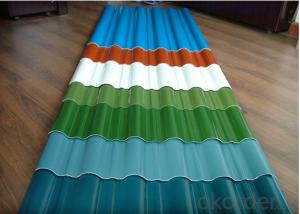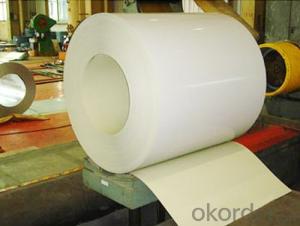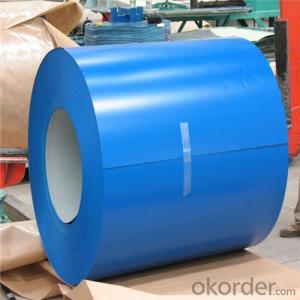Pre-painted Galvanized Steel Coil Used for Industry with Very Good Price
- Loading Port:
- Tianjin
- Payment Terms:
- TT or LC
- Min Order Qty:
- 25 m.t.
- Supply Capability:
- 5000 m.t./month
OKorder Service Pledge
OKorder Financial Service
You Might Also Like
Pre-painted Galvanized Steel Coil Used for Industry
1.Structure of Pre-painted Galvanized Steel Coil Description
With GI as base metal, after pretreatement and liquid dope with several layers of color, then after firing and cooling, finally the plate steel is called pre-painted galvanized steel. Pre-painted galvanized steel is good capable of decoration, molding, corrosion resistance. It generally displays superior workability, durability and weather resistance.
2.Main Features of Pre-painted Galvanized Steel Coil
•High Purity
•Easy control and operation
•High strength
•Fast melting
•Competitive price
•Best Service
3. Pre-painted Galvanized Steel Coil Images
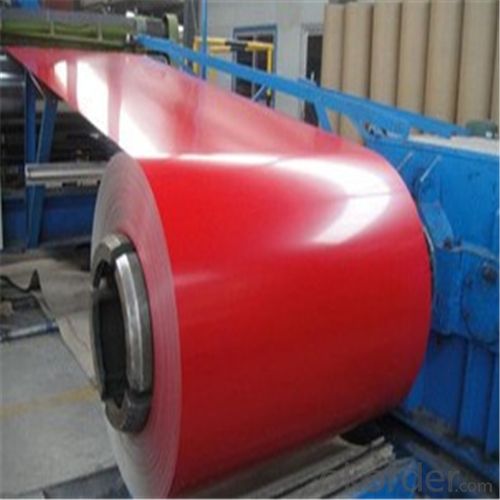
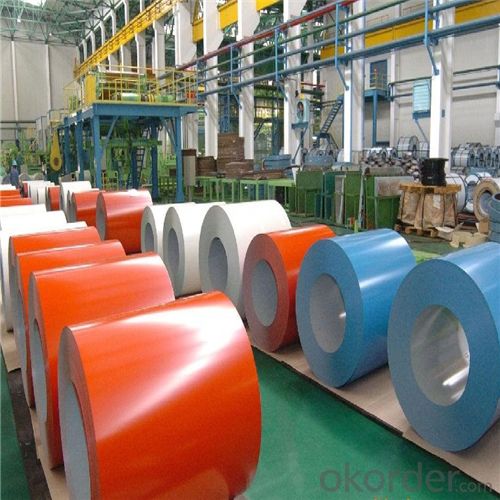
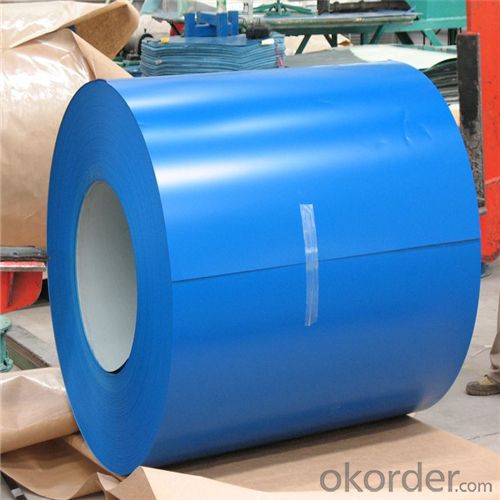
4. Pre-painted Galvanized Steel Coil Specification
Pre-painted Galvanized Steel Coil | |
Thicknenss | 0.18mm-1.5mm |
Width | 900-1250mm |
Coating mass | 30-275g/㎡ |
Paint | PE, PVDF, PU |
Color | RAL Scale |
Coil weight | 3-7mt |
Coil inner diameter | 508 or 610mm |
5.FAQ of Hot-Dip Galvanized Steel Coil
We have organized several common questions for our clients,may help you sincerely:
①How about your company?
A world class manufacturer & supplier of castings forging in carbon steel and alloy steel,is one of the large-scale professional investment casting production bases in China,consisting of both casting foundry forging and machining factory. Annually more than 8000 tons Precision casting and forging parts are exported to markets in Europe,America and Japan. OEM casting and forging service available according to customer’s requirements.
②How to guarantee the quality of the products?
We have established the international advanced quality management system,every link from raw material to final product we have strict quality test;We resolutely put an end to unqualified products flowing into the market. At the same time, we will provide necessary follow-up service assurance.
③How long can we receive the product after purchase?
In the purchase of product within three working days, We will arrange the factory delivery as soon as possible. The pecific time of receiving is related to the state and position of customers.Commonly 7 to 10 working days can be served.
- Q: How can I judge the quality of steel?
- The quality of the alloy can be very well be judged by its appearance and lustrous surface. The more luster on the surface the more refine will the steel be. To judge its tenacity and endurance, the alloy can be subjected to a series of procedures involving stress and shock. There are many more scientific methods of measuring the quality of the alloy such as texture measurement technique etc are also employed. In layman’s term the quality can be measured by the hardness of surface, brightness and smoothness of the surface and absence of any depressions or troughs.
- Q: What are the different types of steel alloys used in coil manufacturing?
- There are several different types of steel alloys used in coil manufacturing, including carbon steel, stainless steel, and high-strength low-alloy (HSLA) steel. Carbon steel is the most commonly used alloy, known for its high strength and durability. Stainless steel is used for its corrosion resistance and aesthetic appeal. HSLA steel offers a combination of strength, formability, and weldability, making it suitable for various applications in coil manufacturing.
- Q: How are steel coils used in the production of agricultural structures?
- Steel coils are widely used in the production of agricultural structures due to their exceptional strength and durability. These coils, typically made of high-quality steel, are used in various applications throughout the agricultural industry. One of the primary uses of steel coils in agricultural structures is for the construction of buildings and storage facilities. Steel coils are used to create sturdy frameworks, supporting the walls and roof of these structures. The inherent strength of steel allows for the construction of large, open spaces without the need for excessive support columns, providing farmers with ample space to store their crops, machinery, and livestock. Additionally, steel coils are utilized in the manufacturing of agricultural equipment and machinery. Whether it is tractors, plows, harvesters, or irrigation systems, steel coils play a crucial role in the fabrication of these tools. The high tensile strength of steel ensures that these agricultural machines can withstand the demanding conditions of farming, such as heavy loads, rough terrains, and exposure to harsh weather elements. Furthermore, steel coils are also used in the production of fencing and enclosures for agricultural purposes. Whether it is to protect crops from animals or to create boundaries for livestock, steel coils are an essential component in constructing sturdy and reliable fences. The strength of steel ensures that these fences can withstand the pressure from animals, preventing them from breaking through and causing damage to the crops or escaping. In summary, steel coils are integral to the production of agricultural structures and equipment. Their strength, durability, and versatility make them an ideal material for constructing buildings, manufacturing machinery, and creating fences in the agricultural industry.
- Q: I have lung cancer. My doctor told me to invest in stainless steel pots to cook with, instead of magnalite. What's the difference between the all stainless steel pots and the Hard-Anodized pots? and are there any stainless steel pots that are nonstick?
- If you are changing cook ware to improve your health, don't go with non-stick, because you will eventually be ingesting all that coating. The best cookware is cast iron, and the next best is stainless steel. The idea behind this recommendation is to reduce as many stresses on your immune system, so your systems can help you heal. There may be lots of other things you can do to eliminate chemicals and toxins from your house and food, so start with one thing at a time. Get some stainless steel mixing bowls, one stainless steel pot to boil water in, and then look into eating more raw foods. Use your blender and broiler. Good luck. I believe you can heal following eliminating the toxins from your house and food.
- Q: How are steel coils used in the agricultural industry?
- Steel coils are used in the agricultural industry for a variety of purposes, including the manufacturing of farm equipment such as tractors, combines, and plows. These coils are also used in the construction of storage tanks, irrigation systems, and fencing materials. Additionally, steel coils are utilized in the production of agricultural buildings and structures like barns, silos, and greenhouses.
- Q: What are the different types of steel coil slitting machines?
- There are several different types of steel coil slitting machines, including manual slitters, semi-automatic slitters, and fully automatic slitters. Manual slitters require manual adjustment and operation, while semi-automatic slitters have some automated features but still require some manual intervention. Fully automatic slitters are the most advanced type, with fully automated controls and high-speed operation.
- Q: Which is used for what?Differences as far as style etc.???Better in your opinion and why??I'm just beginning to look at guitars i might be able to get at christmas if i'm still committed..i've been looking online.,,,,NYLON or STEEL STRINGED ACOUSTIC GUITAR????Thanks.
- u can play any type o music with steel stringed guitar.. but with nylon string ,guitarist usually pick the strings with finger nails,coz its will be hard to hit that with guitar picks coz there will be a chance of string popping nylon string gutiars are used for classical guitar playing... the tone is somehow sweeter on nylon.. but its up to you according to your music style
- Q: How are steel coils protected against UV radiation?
- Steel coils are protected against UV radiation through the application of protective coatings or paints. These coatings act as a barrier, shielding the steel from direct exposure to UV rays, preventing oxidation and degradation of the metal.
- Q: Explain your answers please. I was watching mythbusters and they bought a steel coffin over a wooden one because they thought it would hold more dirt. Now how come bridges that have been made of wood lasted way longer than steel bridges? Or rollercoasts for example.
- steel.
- Q: When maintaining a japanese knife: Is a honing steel still necessary if I have a fine 3000/8000 grit whetstone?which do you prefer?
- A steel is to clean off an edge and remove any bends on the bevel, it is not directly for sharpening as it removes no material from the knife (or should not). A whetstone, however fine, does remove material. A steel to maintain an edge, a stone to restore an edge. They are different items for different purposes.
Send your message to us
Pre-painted Galvanized Steel Coil Used for Industry with Very Good Price
- Loading Port:
- Tianjin
- Payment Terms:
- TT or LC
- Min Order Qty:
- 25 m.t.
- Supply Capability:
- 5000 m.t./month
OKorder Service Pledge
OKorder Financial Service
Similar products
Hot products
Hot Searches
Related keywords
